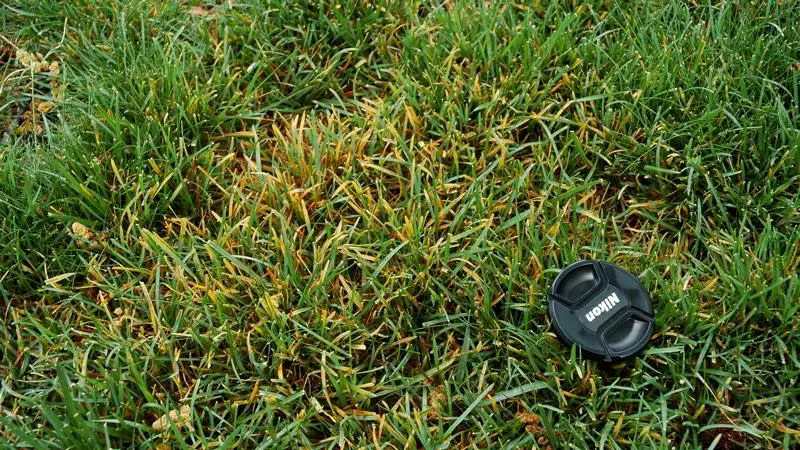Rust fungus is a common lawn disease that causes reddish-orange spots on grass blades. It is caused by a group of fungi known as Puccinia species. Rust fungus thrives in cool, wet conditions and can be a persistent problem during spring and fall when nights are cool and daytime temperatures are moderate. The good news is that rust fungus is treatable if caught early. Here are some tips for getting rid of rust fungus in your lawn:
Page Contents
Remove affected grass blades
As soon as you notice rust fungus, remove affected grass blades to prevent the disease from spreading. Use a rake or leaves blower to gather and dispose of any blades that have orange pustules on them. Removing diseased blades helps reduce the amount of spores that could infect healthy grass.
Improve air circulation
Rust fungus thrives in lawns with poor air circulation and extended leaf wetness. Improve airflow by pruning any low hanging tree branches or dense shrubs. This allows better wind circulation to dry out your lawn faster after rain or irrigation. Proper spacing between lawn plants also improves airflow.
Water early in the day
Only water your lawn in the early morning hours. This gives the grass blades time to dry out before the cooler overnight temperatures set in. Avoid frequent shallow watering which creates the moist environment rust fungi need to infect grass.
Fertilize appropriately
Excess nitrogen fertilizer can make lawns more susceptible to rust fungus. Focus on fertilizers with more potassium and phosphorous which strengthen grass plants against disease. Organic fertilizers like compost also build lawn health naturally over time.
Apply fungicides
For moderate or severe rust fungus infestation, fungicides containing azoxystrobin, myclobutanil, chlorothalonil, mancozeb or triadimefon can be effective. Always follow product labels and safety precautions when applying fungicides. Depending on formulation, 2-3 treatments applied 7-14 days apart may be needed to completely eliminate rust fungus.
Natural fungicides
Some natural fungicides can also be used:
- Baking soda – 1-2 teaspoons per 1 quart of water, sprayed weekly
- Milk spray – 1 part milk to 2 parts water, sprayed weekly
- Neem oil – Follow label instructions for mixing
Boost lawn health
The best defense is a healthy, vigorous lawn. Rust susceptible grass varieties like perennial ryegrass may need reseeding with more disease resistant cultivars. Also dethatch and aerate lawns regularly to improve soil conditions. Lastly, mow high (3-4 inches) and leave clippings which provide free fertilizer for your lawn.
Be patient
Rust fungus takes time to fully treat. Focus on improving lawn health and diligently removing affected blades. Within several weeks, you should see rust fungus decline with proper cultural practices and antifungal treatments.
Conclusion
Rust fungus is a common lawn disease characterized by reddish-orange spots on grass. While unsightly, it can be effectively managed through proper mowing, watering, fertilization techniques and targeted fungicide applications. Combine these with improving air circulation, dethatching and boosting overall lawn vigor for the best results. With patience and persistence, you can rid your lawn of stubborn rust fungus.
